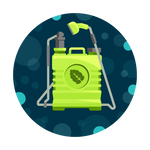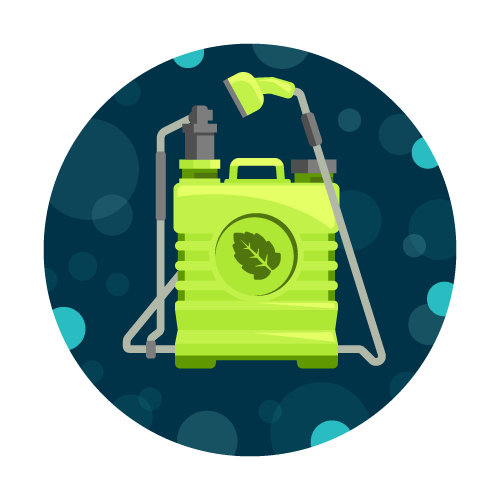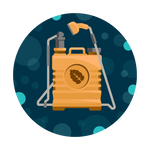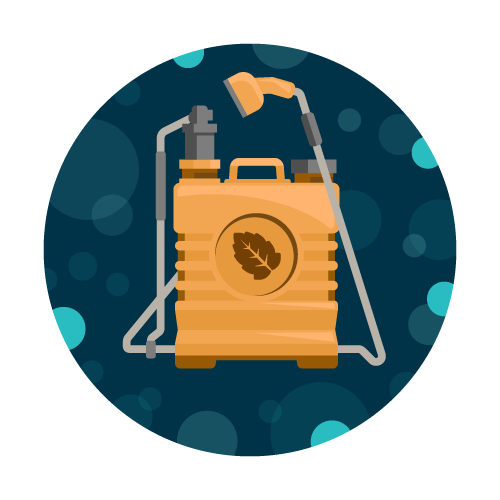
Aquatic Herbicides Explained
Our blog is written by real experts— not AI. Each guide is carefully reviewed and updated based on the latest research. Plus, with no affiliate links, you can count on unbiased insights you can trust.
Something you may not have pictured is people directly spraying chemicals into water sources, but that’s how aquatic herbicides are applied.
What Are Aquatic Herbicides?
Aquatic herbicides are used to control unwanted algae and weeds in water bodies, particularly lakes, rivers, and wetlands. These herbicides are different from those that are applied to land (for example on crops and industrial sites) to control weeds, though there are many cases where one compound is used for both purposes (for example, glyphosate).
Aquatic herbicides include Sonar (fluridone), Rodeo (glyphosate), and Aquathol (endothall), among many others.[1] They are most often used to kill invasive plant species and reduce algal blooms that threaten the health of aquatic ecosystems. Only certain chemicals are permitted by the EPA for use as aquatic herbicides.[2]
Why and How Are Aquatic Herbicides Used?
The importance of a healthy aquatic ecosystem:
A healthy aquatic ecosystem is a well-oiled machine.[3] Microscopic algae called phytoplankton and other, larger aquatic plants provide oxygen and shelter for fish and other animals. In turn, animals produce carbon dioxide and cycle nutrients that help plants thrive.
A healthy aquatic ecosystem is important for maintaining good water quality. Organisms filter pollutants and break down organic material (i.e. decaying plant and animal waste), buffering the effects of chemical waste and sewage pollution.[4] In theory, aquatic herbicides are used to address disruptions to this process.
How can plants and algae disrupt the ecosystem?
When weeds or algae become overgrown, they create too much shade and kill many of the species growing below them. This makes it difficult for aquatic animals to find food. Overgrowth also makes swimming, fishing, or other recreational activities difficult or even impossible.[4]
One culprit for this ecosystem disruption is algal blooms. Warm water temperatures during the spring and summer, as well as the presence of too many nutrients (often the result of fertilizer or sewage runoff) can cause a thick layer of algae to grow on the surface of water bodies. Certain algal blooms can produce toxins harmful to human health or cause an unsightly green color in water.[5]
Additionally, “invasive” plants, plants that are not native to a specific area, can enter an ecosystem from another location and take up a large amount of space and nutrients, harming native species.
An example is Eurasian watermilfoil, an invasive plant species that creates dense mats of foliage on the surface of water and kills other plants that provide shelter or food for native animals.[6] Invasive aquatic species, including watermilfoil, primarily spread by hitching onto human watercraft and equipment.[11]
In these cases, aquatic herbicides are used to prevent or impede plant or algae growth.
What does the aquatic herbicide application process look like?
Aquatic herbicides can be applied directly to nuisance plants and algae, or dispersed through an entire water body. They come in many forms, including soluble crystals or powders, concentrates, or emulsifiers. These formulations are bought by environmental agencies, contractors, farmers, and sometimes homeowners. In many cases, a state permit is required based on certain variables like the type of water body, the species to be controlled, and the amount of herbicide required.[7]
While some herbicides kill the target species within days. For example Diquat takes between 24 and 36 hours. Others require multiple weeks of use to be effective. Fluridone requires the maintenance of prescribed concentrations for 45-80 days to control invasive hydrilla.[8]
During and surrounding the application period, irrigation, swimming, and other water contact may be restricted for a water body, depending on the herbicide used.
Glyphosate Water Test
Test your drinking water for the popular herbicide glyphosate, also known as Roundup.
Herbicides Water Test
Test your drinking water for common herbicides used in agricultural areas–including 2,4-D and dalapon.
Diquat Water Test
Test your drinking water for Diquat–an herbicide used on fruit and vegetable crops, and on weeds in ponds, lakes, and reservoirs.
How Aquatic Herbicides Impact You
Do aquatic herbicides have human health effects?
Aquatic herbicides are designed to target biochemical processes that do not occur in animals, so in theory they should be harmless to humans.[2] However, laboratory toxicity studies on rats and other animals have shown that at high levels, some of these chemicals can cause adverse health effects.[8]
Maximum use rates are therefore established for aquatic herbicides, and the EPA requires by law that users follow all instructions on aquatic herbicide product labels.[10]
Do aquatic herbicides impact water quality?
They can impact water quality in a few ways. Certain aquatic herbicides act rapidly, killing a large number of plants in a short amount of time. As dead plant matter breaks down in the water, it can cause low oxygen conditions that cannot sustain the animals living in the water body. Aquatic herbicides can also impact non-target plant species, causing them to wither or die. This can damage the shelter and oxygen available to animals and reduce the health of the ecosystem.[4]
The healthier the ecosystem, the better it filters pollution, and the better the source is for recreational activity such as swimming and fishing. The use of aquatic herbicides can therefore damage water quality. It is ultimately a balancing act between killing overgrown, unwanted aquatic plants, and maintaining a healthy environment in the water. The best way to prevent the need for aquatic herbicides is to protect water sources from human activities that cause the overgrowth of plants and algae. These include the release of nutrient-rich pollutants and the spread of invasive species through human travel.
If you have any concerns about herbicides in your water, you can test your water with the specialized test packages listed above. Always feel free to reach out to our team of water quality engineers, treatment experts, and chemists who are standing by to help figure out your next steps and answer any questions you may have about your water. Send them a message any time: support@mytapscore.com.
Read More
▾Sources and References
▾- Advantages and Disadvantages of Aquatic Plant Management Techniques
- Aquatic Herbicide Testing, Toxicity, and EPA Registration – Plant Management in Florida Waters
- Sustaining Healthy Freshwater Ecosystems
- Management of Aquatic Plants
- Algal Blooms
- Eurasian watermilfoil (Myriophyllum spicatum) | Minnesota DNR
- Aquatic Pest Control | US EPA
- Background on Registered Aquatic Herbicides - Plant Management in Florida Waters - An Integrated Approach
- Updated Public Health Goals for Chemicals in California Drinking Water: Carbofuran, Diquat, Endrin, Picloram, Thiobencarb
- About Pesticide Registration | US EPA
- Invasive Species | National Wildlife Federation (nwf.org)
















